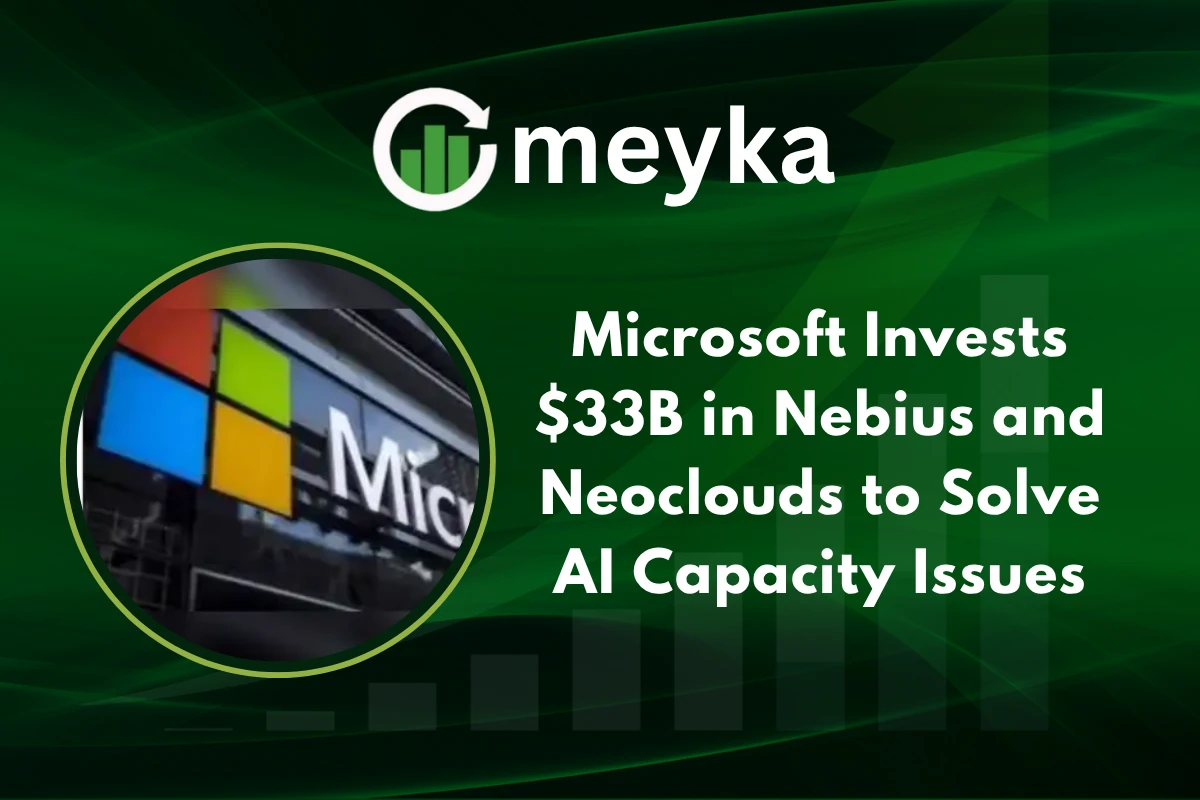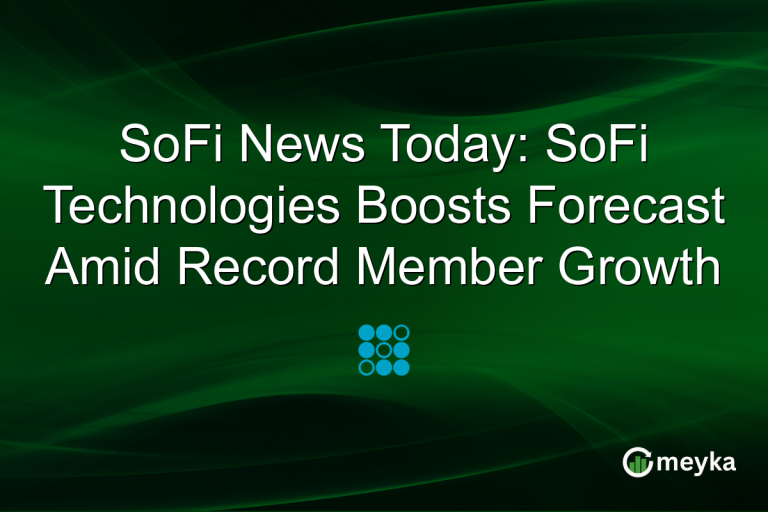Microsoft Invests $33B in Nebius and Neoclouds to Solve AI Capacity Issues
Microsoft announced a major push to ease a growing AI capacity crunch. The company plans to invest $33 billion in two emerging cloud providers, Nebius and Neoclouds, to add compute, data centre lift, and specialised AI hardware.
The move aims to accelerate model training and hosting, and to provide Microsoft with more flexibility as demand for generative AI surges.
Microsoft’s $33B Investment Explained
Why Microsoft chose Nebius and Neoclouds
Microsoft picked Nebius and Neoclouds for their flexible architecture and regional reach. These firms specialise in dense AI compute and fast interconnects, features that make training large language models more efficient.
According to reports, Microsoft will fund capacity, joint data-centre builds, and chip procurement to scale quickly.
Why is Microsoft investing in Nebius and Neoclouds now? Because AI demand is outpacing available capacity, and building everything in-house would be slower and costlier. This partnership speeds time to scale.
Breaking down the investment strategy
The $33 billion package blends direct capital, long-term buying commitments for chips, and co-funded infrastructure projects. Microsoft aims to secure supply lines for GPUs and specialised AI accelerators.
The strategy reduces single-vendor risk and gives Microsoft access to regional capacity where its Azure footprint needs reinforcement.
What is the short-term goal? Get more training cycles running, faster and cheaper, to support product launches and enterprise AI demand.
Microsoft’s AI Capacity Challenge
The growing demand for generative AI tools
Generative AI models are huge. Training them uses vast computing power. As more customers adopt AI features, demand for model training and inference has exploded.
Microsoft’s Azure, combined with OpenAI partnerships, needs more capacity than it can build alone without breaking timelines or margins.
Data centre crunch and cloud pressure
Data centres require space, power, and networking. Shortages of GPU supply and local data-centre capacity have become bottlenecks. Microsoft’s investment is a direct response: add regional capacity, secure chips, and avoid long procurement queues. This is a tactical step to keep product roadmaps on track.
Will this stop outages and delays? It should reduce them, but full relief depends on chip supply and build-out speed.
Microsoft’s Global Impact of the Investment
What it means for the cloud industry
Big cloud players will take note. Microsoft’s bet validates the neocloud model, where specialised providers handle very dense AI workloads.
This may drive more partnerships and accelerate private investment into high-power data centres. Smaller cloud firms might find new demand and new partners.
Reactions from tech and finance analysts
Analysts see this as both defensive and offensive. It protects Microsoft’s AI lead and opens a new route to serve enterprise clients with lower latency and better regional compliance. Financial markets also view it as a long-term growth spend, though some worry about upfront capital intensity.
How will competitors respond? Expect Amazon, Google, and other hyperscalers to expand GPU deals and form similar partnerships or to accelerate internal build-out.
Why Microsoft Is Betting on Neoclouds
Advantages of emerging cloud providers
Neoclouds focus on racks of accelerators, advanced cooling, and low-latency fabric. They can be nimble, and they often build near power and fibre hubs.
Microsoft (MSFT) gains a rapid scale option without waiting for traditional data centre build cycles.
How Nebius fits into the bigger picture
Nebius offers modular, rapidly deployed pods that can be expanded quickly. Microsoft’s capital will help Nebius scale in targeted regions, while Microsoft gets priority access to capacity. This aligns with a trend: hyperscalers partnering with specialized suppliers to meet AI demand more quickly.
Is this a long-term shift in cloud strategy? Possibly. The move shows hyperscalers are more willing to outsource intense workloads to specialised partners.
Market Reactions to Microsoft’s Move
Stock market sentiment and investor views
Initially, investors welcomed the clarity: Microsoft is solving a real bottleneck proactively. The market saw the investment as evidence of enduring AI demand. Some investors flagged the near-term capital hit, but many accepted it as necessary to keep growth trajectories intact.
Tweets and social media response
Social feeds lit up with takes on the scale and timing. Tech influencers praised the speed and logic behind the deal, while some finance voices questioned whether $33B is the right allocation amid other spending priorities. The debate highlights the trade-off between growth and margin.
Challenges and Risks Ahead for Microsoft
Competition from Amazon, Google, and Meta
Amazon Web Services, Google Cloud, and Meta are all scaling AI capacity. Each has its own approach: AWS builds, Google optimises, Meta invests in silicon. Microsoft’s partnerships must still compete on price, service, and ecosystem integration. If rivals secure chip deals earlier, Microsoft may face capacity tightness again.
Regulatory and infrastructure risks
Data privacy rules, export controls on AI chips, and local permitting for data centres all add risk. Energy costs and grid access can slow build-outs. Microsoft must manage geopolitical, environmental, and regulatory hurdles in each target market. These risks could delay expected returns.
What if chip supply tightens again? That would slow the benefit. Microsoft’s deals aim to secure supply, but no one is immune to global shortages.
The Future of Microsoft and AI Investments
Long-term vision for AI infrastructure
Microsoft is positioning itself as both a platform and a partner. The $33B move signals a new phase: hyperscalers will not only build, they will partner, invest, and co-create supply chains for AI. This hybrid approach may become the norm as models keep growing in size and complexity.
Will Microsoft’s bet pay off?
If the partnerships deliver faster model cycles, lower costs, and better regional coverage, yes. Execution is key: timely build-outs, chip delivery, and legal compliance. For customers, this should mean faster AI features and more stable services. For Microsoft, it is a bet on being the backbone of the AI era.
Why does this matter to users? Better infrastructure means faster tools, lower latency, and more powerful AI features in the apps and services people use every day.
Conclusion
Microsoft has made a bold, practical move by investing $33 billion in Nebius and Neoclouds. The company is tackling a real and urgent problem: AI capacity. The plan combines capital, supply commitments, and regional builds to secure GPUs, expand data centres, and cut model training times.
The move reshapes the cloud landscape by validating specialised neocloud partners. Execution will decide success, but the strategy signals a clearer path to scale for the next generation of AI services.
FAQ’S
Microsoft is investing billions in AI to strengthen its Azure cloud platform and integrate advanced AI tools into products like Office and Bing.
Analysts often view Microsoft stock as a strong long-term buy due to consistent revenue growth, strong cloud demand, and expansion in AI infrastructure.
Microsoft earns most of its revenue from cloud computing through Azure, productivity software like Office 365, and enterprise services.
Microsoft has acquired companies such as Activision Blizzard, GitHub, and LinkedIn to expand into gaming, developer tools, and professional networking.
Microsoft competes by offering enterprise-grade Azure solutions, AI-driven products, and global infrastructure to challenge AWS and Google Cloud.
Disclaimer
This is for information only, not financial advice. Always do your research.






